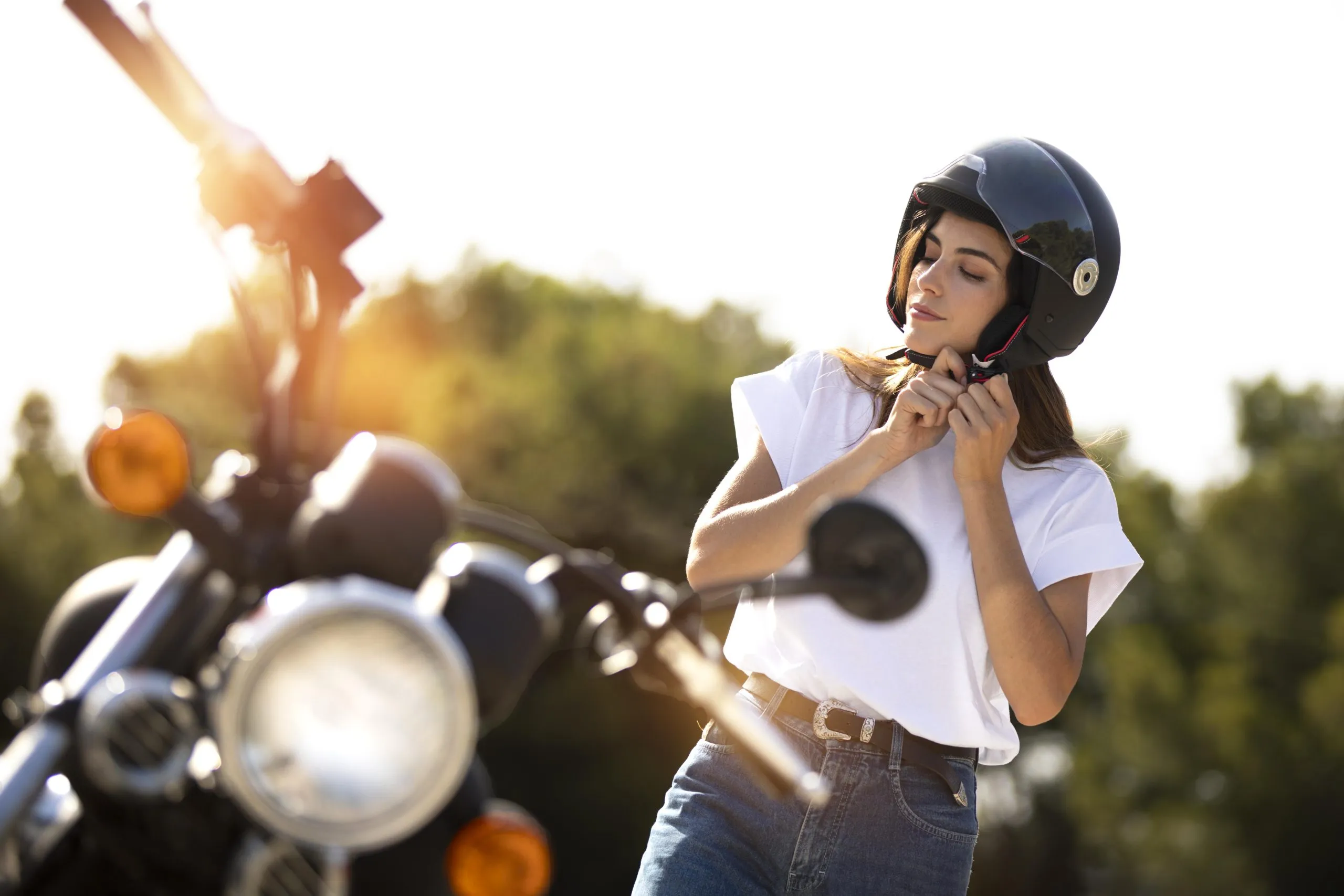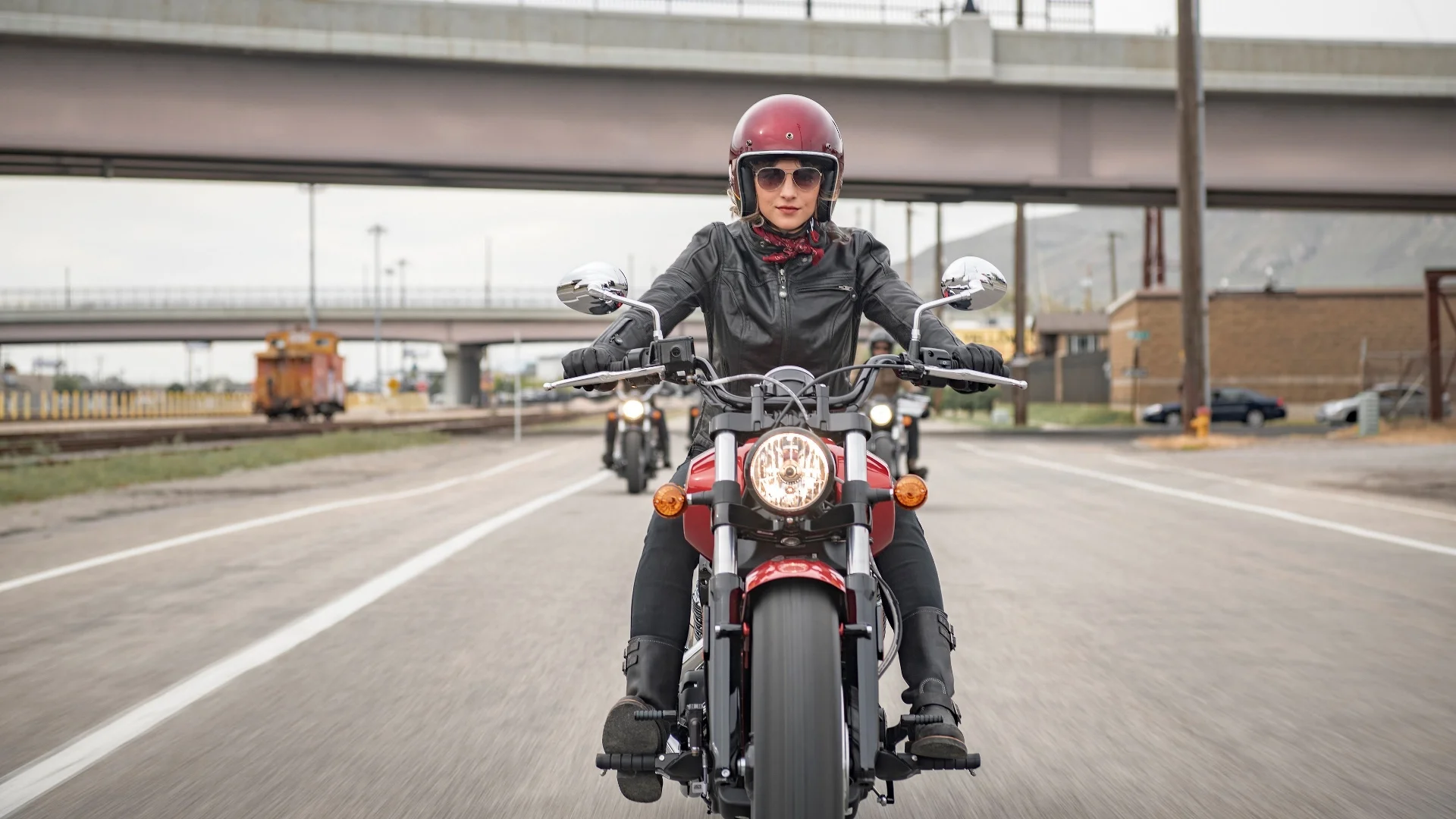Mar 11, 2024
How to Ride A Motorcycle?
Gear Up and Hit the Road: A Beginner’s Guide to Motorcycle Riding
The open road beckons, the wind whispers adventure, and the thrill of riding a motorcycle is undeniable. But for new riders, the journey can seem daunting. This article equips you with the essential knowledge and skills to navigate your first motorcycle rides with confidence. Here’s a breakdown of the basics, covering everything from pre-ride preparations to essential riding techniques.
Safety First: Gearing Up for Your Ride
Motorcycle safety is paramount. Before hitting the road, ensure you’re properly geared up:
- DOT-Approved Helmet: A properly fitting helmet is your most crucial safety equipment. Look for a DOT (Department of Transportation) approved helmet that offers complete head protection.
- Durable Jacket and Pants: Invest in a high-quality motorcycle jacket and pants made of abrasion-resistant materials like leather or heavy textiles. These offer protection in case of a slide.
- Gloves and Boots: Wear motorcycle-specific gloves and boots that provide protection and good grip on the controls.
- Eye Protection: A full-face helmet offers a visor, but consider additional eye protection like goggles for added safety, especially on open roads.
Remember, proper motorcycle gear isn’t just about safety; it also protects you from the elements and enhances your comfort during longer rides.
Know Your Machine: Familiarize Yourself with Your Motorcycle
Before you fire up the engine and hit the road, take some time to truly familiarize yourself with your motorcycle. This isn’t just about memorizing where the buttons are – it’s about understanding how each component works and how they interact with each other. Just like any complex machine, knowing your motorcycle’s intricacies builds confidence and ensures a smoother, safer riding experience. Here’s a breakdown of the key areas to focus on:
Controls:
This is where your hands and feet come into play. Locate the throttle, which controls engine speed and acceleration. Find the clutch lever, essential for gear changes, and the brake levers for both the front and rear wheels. Identify the gear shifter, used to change gears up and down, and the turn signals and horn for communication with other vehicles. Spend some time practicing operating these controls while the motorcycle is stationary. Get a feel for their travel distance, pressure required, and how they affect the motorcycle’s behavior.
Instruments:
The instrument cluster is the information hub of your motorcycle. Familiarize yourself with the speedometer, which displays your current speed. The tachometer indicates engine RPM (revolutions per minute), helpful for understanding engine load and selecting the right gear. Locate the fuel gauge to monitor your fuel level and avoid running out on the road. There will also be indicator lights for various functions like turn signals, neutral gear, and engine oil pressure. Understanding these lights allows you to identify potential issues and maintain safe operation.
Brakes:
Braking is crucial for safe riding. Locate the front and rear brake levers and practice applying them gently at low speeds in a controlled environment, like an empty parking lot. Feel the feedback from each brake and how it affects the motorcycle’s deceleration. Remember, the front brake provides significantly more stopping power than the rear brake. Practicing proper braking technique builds muscle memory and ensures you can slow down safely in different situations.
Fluid Levels and Chain Maintenance:
While not necessarily part of familiarization, understanding where to check fluid levels and how to maintain your chain is vital. Consult your motorcycle’s owner’s manual to locate the dipstick for checking engine oil and coolant. Learn how to inspect the chain for tension and lubrication, as a loose or dry chain can cause problems. Performing these simple checks before each ride helps ensure your motorcycle is in top condition.
Finding Your Balance: Mastering Basic Motorcycle Techniques
Now, let’s explore some fundamental motorcycle riding techniques:
- Finding Balance: Practice balancing exercises with the motorcycle stationary. Sit on the seat with your feet flat on the ground, then gradually lift your feet and hold the balance for a few seconds.
- Friction Zone: Locate the friction zone – the point where the clutch engages and the motorcycle begins to move. Practice finding and holding the friction zone while stationary.
- Starting and Stopping: With the clutch lever pulled in and the motorcycle in neutral, start the engine. Gently release the clutch lever while applying a little throttle to move forward. Practice smooth starts and stops in a safe, controlled environment.
- Shifting Gears: While maintaining throttle control, practice using the clutch lever and gear shifter to smoothly transition between gears.
Mastering these basic techniques in a controlled environment builds muscle memory and prepares you for real-world riding situations.
Hitting the Open Road: Essential Riding Tips for Beginners
Once comfortable with the basics, it’s time to take your motorcycle for a spin on the open road. Here are some essential tips for new riders:
- Start Slow and Choose Safe Routes: Avoid busy roads initially. Find quiet, low-traffic areas to practice your skills and gain confidence.
- Scan the Road Ahead: Maintain a good lookout for potential hazards like stopped vehicles, potholes, or uneven road surfaces. Practice anticipating potential dangers.
- Stay in Your Lane: Maintain a straight line and avoid weaving in and out of traffic. Signal well before changing lanes.
- Smooth Braking and Throttle Control: Apply brakes and throttle smoothly to avoid jerky movements that could destabilize the motorcycle.
- Relax and Enjoy the Ride: Don’t tense up. Grip the handlebars firmly but comfortably. Focus on enjoying the ride while maintaining awareness of your surroundings.
Remember, becoming a skilled motorcycle rider takes time and practice. Be patient, prioritize safety, and gradually refine your skills as you gain experience.
Beyond the Basics: Advanced Techniques and Resources
As your confidence grows, you can explore more advanced motorcycle riding techniques:
- Cornering: Learn proper body positioning and throttle control for smooth and safe cornering.
- Night Riding: Night riding requires extra caution. Adjust your speed, use your headlight effectively, and be extra vigilant.
- Highway Riding: Learn the etiquette of highway riding, maintain safe following distances, and be aware of potential hazards like high winds.
There are numerous resources available to help you hone your motorcycle riding skills:
- Motorcycle Safety Courses: Enroll in a motorcycle safety course to learn essential skills and techniques from qualified instructors in a controlled environment.
- Motorcycle Handbooks and Online Resources: Invest in a motorcycle handbook or explore online resources that provide detailed information on motorcycle riding techniques, safety tips, and maintenance procedures.
- Experienced Riders: Connect with experienced motorcycle riders who can offer valuable mentorship and advice.
The Journey Begins: Embrace the Ride
Motorcycle riding is an exhilarating and rewarding experience. By prioritizing safety, mastering the basics, and continuously learning, you’ll develop the skills and confidence to navigate the open road with enjoyment. So, gear up, hit the road, and embrace the thrill of the ride! Here are some additional tips for new motorcycle riders:
- Join a Motorcycle Club: Connecting with a local motorcycle club allows you to meet fellow riders, participate in group rides, and benefit from shared knowledge and experiences.
- Maintain Your Motorcycle: Regularly inspect your motorcycle’s tire pressure, chain tension, fluid levels, and overall condition. Performing basic maintenance ensures your motorcycle is safe and reliable.
- Enjoy the Journey: Motorcycle riding is about more than just the destination. Savor the sights, sounds, and sensations of the open road. Let the ride be a source of enjoyment and stress relief.
Remember, the motorcycle community is welcoming and supportive. Don’t hesitate to ask questions, seek advice, and share your experiences with other riders. As you embark on your motorcycle journey, embrace the learning process, prioritize safety, and most importantly, have fun on the open road!